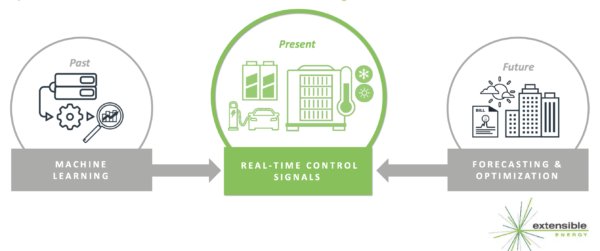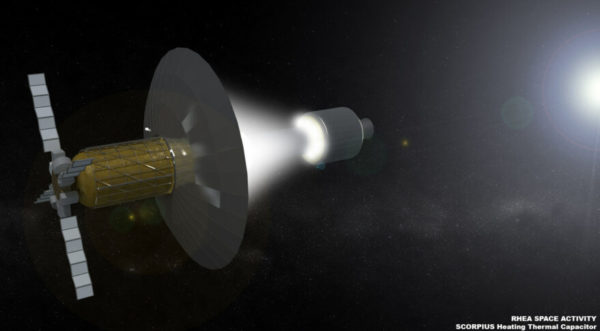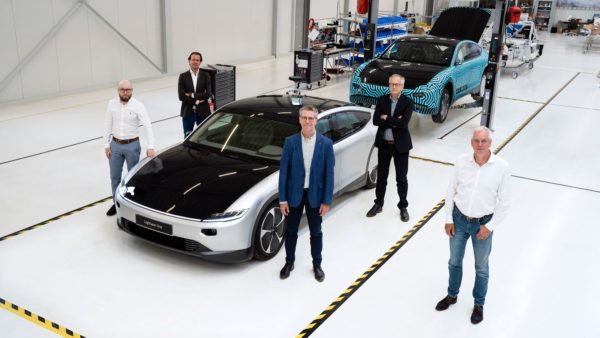In this installment of Startup Sunday, we take a look at three companies making potentially disruptive innovations in solar, energy management, and electric vehicles.
Extensible Energy demand response software
Optimizing building energy performance wherever and whenever is a potential game-changer for owners and grid operators. At least that’s the claim of California-based Extensible Energy, whose software manages energy loads in commercial buildings. It just raised $3.4 million in venture capital, led by Blu Ox Ventures. Based in Oakland, Extensible said it will use the money to scale up sales and ops around its two-year-old DemandEx software.
The company said its software can save building owners up to 30% on demand and time-of-use charges, while also getting them prepped for load flexibility markets. Roll in things like solar installations, HVAC retrofits, and other energy upgrades, and Extensible said that the potential savings can be even greater.

Commercial buildings use around 35% of the electricity consumed in the U.S., but fewer than than 5% have tools to intelligently manage their energy use, said Casey Miller, whose Blu Ox Ventures made the investment.
Extensible said we should look for load flex markets to generate revenue from demand response, as well as for frequency regulation, peak reduction, real-time load shifting, transmission, and deferral services.
Rhea Space Activity designs solar thermal spacecraft
The U.S. Space Force awarded $50,000 to Rhea Space Activity (RSA) to look into solar-powered vehicles for use beyond the Earth’s orbit.
Space Force is thinking about missions between Earth and the moon, but says that one constraint are limitations of typical chemical propulsion systems. RSA thinks that spacecraft powered by solar thermal energy that use water as the main propellant could offer a viable alternative.

Image: Rhea Space Activity
Its design features a solar reflector that folds out origami-style and looks a lot like the dish antenna that hang off of balconies and rooftops. Concentrated sunlight would provide both thermal and electric propulsion, using water as the propellant.
The craft, called Scorpius, moves with high-thrust maneuvers, a change to the older model low-thrust, continuous burn propulsion methods used in other designs.
Lightyear solar EV
Solar electric vehicle designer Lightyear signed a letter of intent with Valmet Automotive to produce its Lightyear One car series.
A prototype recently traveled more than 440 miles and now the Netherlands-based company plans to have a model in production by next summer.

Image: Lightyear
Lightyear One has four independent in-wheel motors along with a solar roof and hood. The vehicle is described as a “cruiser” and can go 0-60 in less than 10 seconds.
One hour of unplugged solar charging yields about 7.5 miles of range. A fast-charger can add roughly 350 miles of range in an hour.
Valmet manufactures other car brands, such as Mercedes-Benz, Saab, and Porsche. It also has its own battery production line and recently invested in engineering and testing capabilities for EV powertrain development.
Have a startup you’d like us to consider? Send your idea to ryan.kennedy@pv-magazine.com.
This content is protected by copyright and may not be reused. If you want to cooperate with us and would like to reuse some of our content, please contact: editors@pv-magazine.com.









By submitting this form you agree to pv magazine using your data for the purposes of publishing your comment.
Your personal data will only be disclosed or otherwise transmitted to third parties for the purposes of spam filtering or if this is necessary for technical maintenance of the website. Any other transfer to third parties will not take place unless this is justified on the basis of applicable data protection regulations or if pv magazine is legally obliged to do so.
You may revoke this consent at any time with effect for the future, in which case your personal data will be deleted immediately. Otherwise, your data will be deleted if pv magazine has processed your request or the purpose of data storage is fulfilled.
Further information on data privacy can be found in our Data Protection Policy.